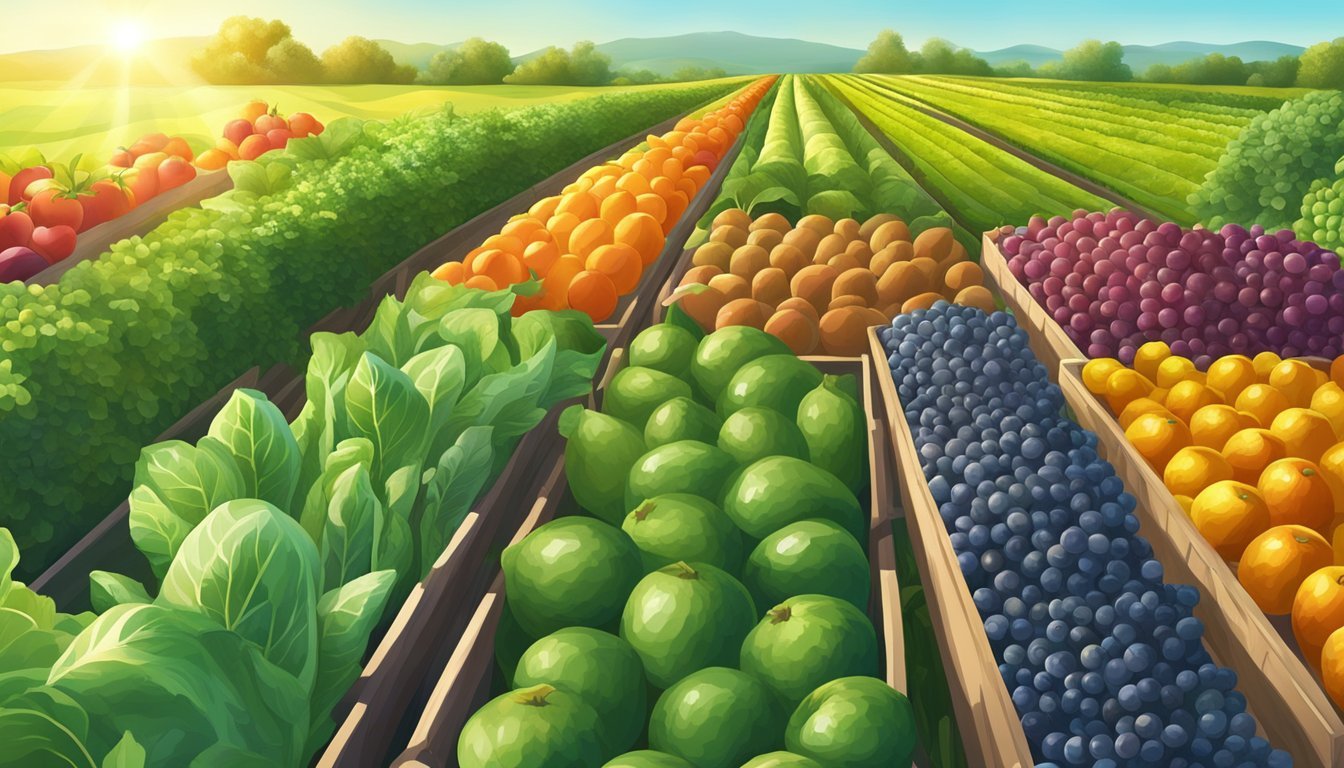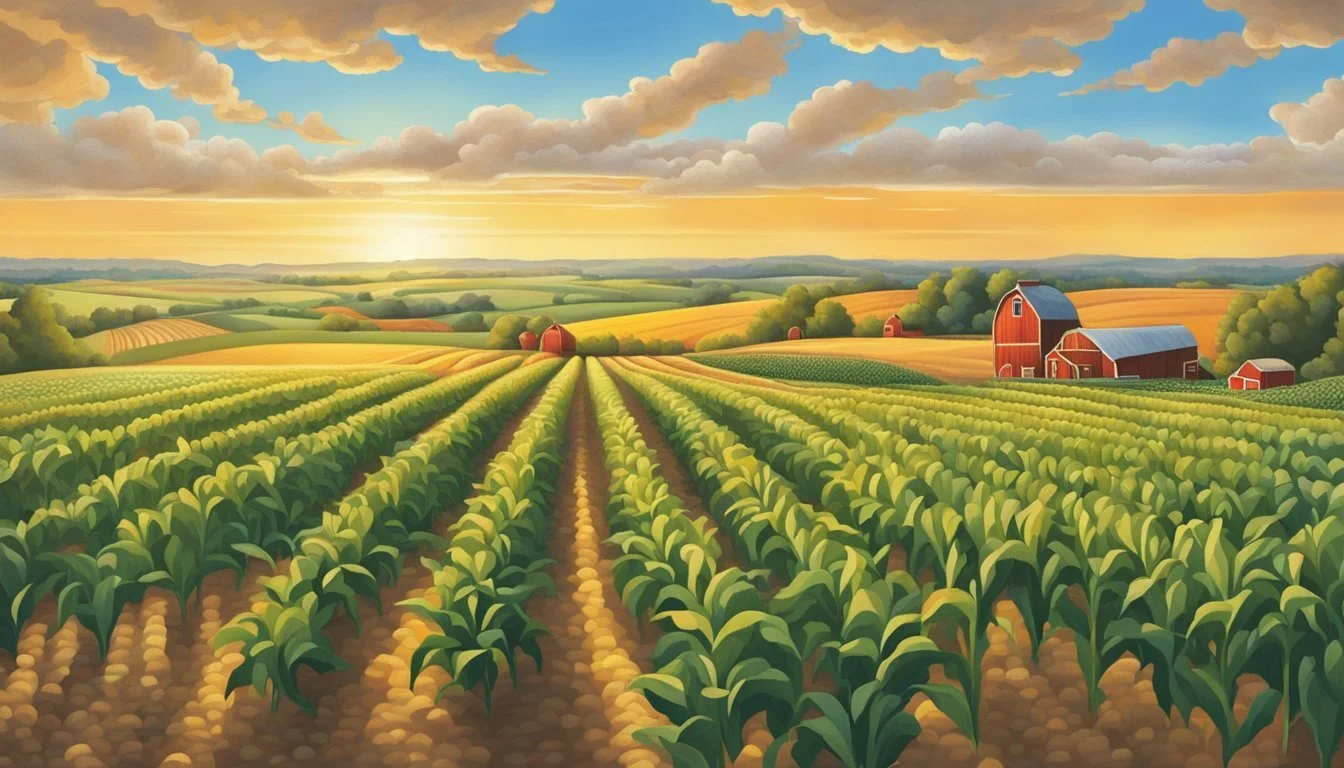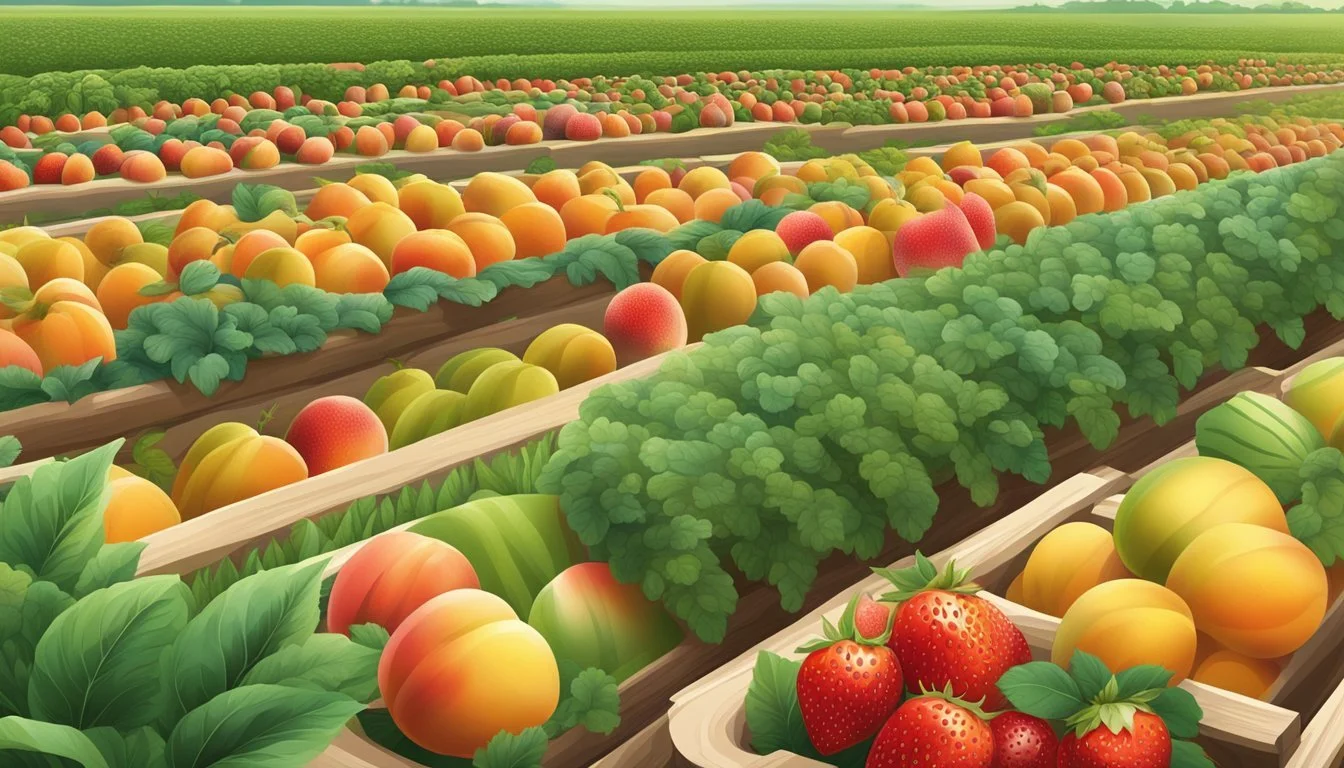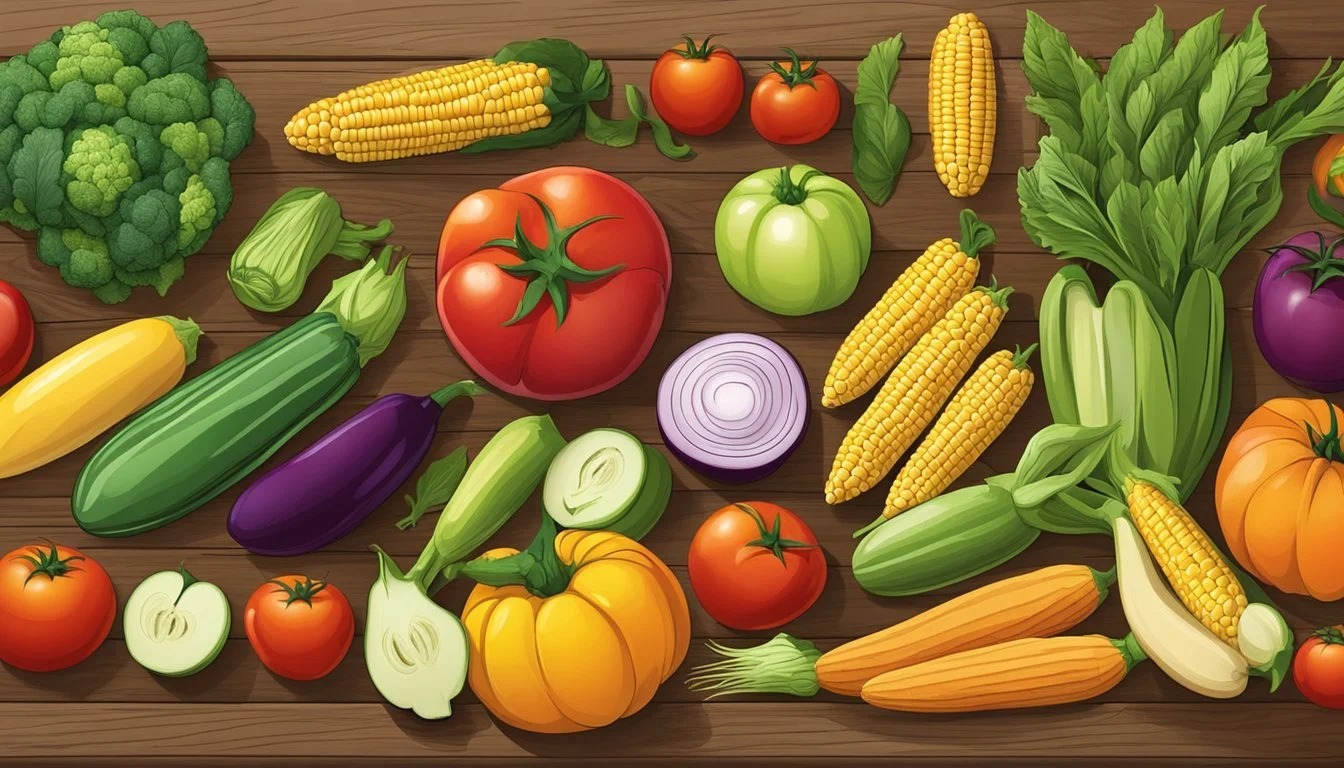Nebraska Seasonal Fruit & Veg Guide
Your Ultimate Monthly Shopping List
In the agriculturally rich state of Nebraska, the farm to table movement weaves together the threads of food education and sustainability by highlighting the importance of seasonal produce. With a climate that supports a diverse range of fruits and vegetables, Nebraskan farmers take pride in offering the freshest and most flavorful produce straight from their fields to consumers' tables. Embracing the cycle of the seasons not only ensures that residents and businesses can enjoy produce at its peak but also fosters a deeper connection with the local food system and the rhythms of nature.
The concept of seasonality is key to understanding the Nebraska produce calendar. While grocery stores may offer fruits and vegetables throughout the year, true seasonality reflects the natural growing phases of the local environment. For example, apples reach their peak in Nebraska between August and October. Eating with the seasons thus means apples are at their most delicious and nutritious during these months. Education plays a significant role in the farm to table movement, empowering individuals with the knowledge to select, store, and prepare these seasonal ingredients to maximize their flavor and health benefits.
Nebraska's seasonal guide serves as a helpful resource for consumers looking to make informed decisions about their food. Whether seeking the sweetest corn in the summer, the crispest apples in the fall, or any other local produce, Nebraskans have the information at their fingertips to eat locally and seasonally. This approach promotes not only personal well-being but also supports the state's agricultural economy and environmental sustainability. Through seasonal eating, individuals contribute to a food culture that values the freshness, taste, and nutritional content of what they eat, all while reinforcing the local farming community.
What’s in Season in Nebraska Right Now?
The Basics of Nebraska's Growing Seasons
In Nebraska, one must navigate the intricacies of a climate that challenges the growth of fruits and vegetables with distinct seasonal weather patterns and soil characteristics that directly impact planting and harvesting schedules.
Understanding Nebraska's Climate and Soil
Climate: Nebraska's climate ranges from USDA hardiness zones 4 to 5, where winters are cold and summers are warm. This state experiences a semi-arid climate in the west and a humid continental climate in the east, leading to varied gardening conditions. It's vital for gardeners to closely monitor local weather forecasts as frost dates can substantially affect the growing season.
Soil: The soil composition is generally rich with loess, silt, and has a high fertility rate, especially along the Platte River valley. However, soil types can vary, and it's essential to test soil and amend it with compost or other organic matter to ensure optimal growing conditions.
Key Planting and Harvesting Times
Planting: Nebraskans typically commence planting cool-season vegetables as early as March or April, with planting extending into May. Warm-season crops follow, often planted after the last frost date, typically from May to June depending on local conditions.
Harvesting: Harvest times in Nebraska begin as early as June for some cool-season crops and can last through October for others. Warm-season crops are usually ready from late July to early October, but timing can fluctuate based on the onset of the first fall frost.
Cool-season crops such as lettuce, spinach, and radishes can often withstand the tail end of chilly weather.
Warm-season crops, like tomatoes and peppers, require a frost-free window and thrive in the heat of Nebraska's summers.
Gardeners plan their schedules around these two critical periods to ensure successful cultivation and abundant harvests.
Seasonal Fruit Availability
Nebraska's climate and soil allow for a rich variety of fruits grown on local farms, providing consumers with fresh options throughout different seasons. Understanding when fruits are available can enhance one's farm-to-table experience.
Summer Fruit Selection and Storage
Strawberries make an early appearance in summer, with the best picking time generally occurring in June. Cherries follow closely, offering their peak ripeness in June and July. Raspberries and blackberries also enjoy the summer warmth, ready to be harvested typically from July to August.
Peaches: Rich and juicy, best picked from July through August.
Blueberries: Available in July, are perfect for immediate consumption or preservation.
Cantaloupes (how long does cantaloupe last?): Prefer the height of summer warmth, ripening by late July and into August.
For storage, most summer fruits benefit from refrigeration, though peaches and cantaloupes should be allowed to ripen at room temperature before chilling.
Fall Fruit Selection and Storage
The fall season in Nebraska is especially known for its apples, with a harvest time spanning from August to October, depending on the variety. Pears and plums join in late summer and reach their optimal harvest in the fall.
Grapes: Typically ready in August but can be picked through September.
Apples: Wide variety peaks throughout September and October.
Pears: Best when picked in late August through September.
It's ideal for these fruits to be stored in cool, dry places; while most apples can be kept in the fridge, grapes should be eaten soon after purchase for maximum freshness. Pears ripen post-harvest and can be chilled once they reach desired softness.
Seasonal Vegetable Availability
In Nebraska, the richness of the soil and the changing seasons create the perfect environment for a diverse array of vegetable crops. The state prides itself on providing fresh, locally grown vegetables that follow the natural cycle of the year.
Summer Vegetable Selection and Storage
Summer in Nebraska heralds a bountiful season for vegetables. Gardens and farms yield an abundance of fresh produce that includes:
Sweet Corn: A staple in summer, best kept in the husk and refrigerated to maintain sweetness.
Cucumbers: Crisp and refreshing, these are best stored in the refrigerator.
Eggplant (What wine goes well with eggplant?): With a rich, creamy texture, eggplants should be used soon after purchase and can be stored at room temperature.
Kale: This nutrient-dense leafy green thrives in the summer; keep kale refrigerated in airtight bags.
Peas: Fresh peas should be refrigerated and shelled only before use.
Peppers: From sweet to spicy, peppers add a pop of color and should be kept in the vegetable crisper.
Summer Squash: Includes zucchini and yellow squash, best stored in the refrigerator.
Proper storage is key for summer vegetables to maintain their freshness and flavor.
Fall Vegetable Selection and Storage
As fall approaches, Nebraska farms offer a new variety of vegetables. The cooler temperatures bring out the best in many root and hearty vegetables, such as:
Broccoli: Vibrant green and full of flavor when harvested in the cooler temperatures; refrigerate to preserve its quality.
Brussels Sprouts: They develop a sweeter taste after the first frost and should be kept in the refrigerator.
Cabbage: A versatile fall staple, cabbage is best kept cool and dry.
Carrots: These sweet, crunchy vegetables maintain their freshness when kept in the coolest part of the refrigerator.
Potatoes: A cool, dark, and dry place will keep potatoes fresh for weeks.
Pumpkins: A symbol of fall, pumpkins should be stored in a cool, dry place.
Winter Squash: Varieties like butternut or acorn squash are fall favorites and should be stored in a cool, dry, well-ventilated area.
Seasonal availability encourages the consumption of produce at its peak in terms of flavor and nutritional value, while also supporting local agriculture.
Where to Buy Local Produce
Nebraska's economy benefits from the direct sale of local produce, which thrives through various outlets. Consumers looking for fresh, seasonal fruits and vegetables have multiple sources to support local farmers and enjoy produce at its peak of flavor.
Farmers Markets and Local Farms
Farmers Markets: For those seeking farm-fresh goods, farmers markets across the state offer a bounty of seasonal produce. Local farmers bring their freshest picks directly to consumers, fostering a sustainable food economy. Shoppers can find a diverse assortment of fruits and vegetables, often including specialty items from Kimmel Orchard & Vineyard. A notable example is the vibrant market in Nebraska City, a hub for fresh local produce.
Nebraska City Farmers Market: A source of local pride, brimming with regional produce.
Local Farms: Farm stands and local farms provide a hands-on approach to buying fresh produce. Patrons can visit places like Nelson Produce Farm, known for their diverse selection of just-harvested goods.
Nelson Produce Farm: Offers a variety of seasonal produce through their own roadside stands.
Grocery Stores Supporting Local Produce
Local Grocery Stores: Grocery stores in Nebraska are increasingly stocking local produce to support area farmers and meet consumer demand for fresh, local options. These stores often label the local fruits and vegetables clearly, building transparency and a shorter food chain, according to the principles advocated by organizations like Buy Fresh Buy Local® Nebraska.
Buy Fresh Buy Local® Partners: Stores committed to sourcing directly from Nebraska's small farms and artisans.
Through these channels, residents and visitors can enjoy the rich tapestry of Nebraska's agricultural offerings while bolstering the local economy and ensuring farmers receive fair compensation for their labor.
Selecting and Storing Fresh Produce
Choosing fresh, seasonal fruits and vegetables and storing them properly ensures peak flavor and longevity. This guide highlights trustworthy methods to select and store produce, focusing on those varieties that are currently in season in Nebraska.
Tips for Selecting the Best Fruits and Vegetables
When selecting fruits and vegetables:
Freshness: Look for vibrant colors and firm textures; these often indicate freshness.
In Season: Opt for items that are currently in season for optimal taste and value.
Variety: Incorporate a variety of produce to benefit from a range of nutrients.
For instance:
Apples: Peak season is between August and October. Choose firm apples with no wrinkles or bruises.
Tomatoes: Select plump and heavy tomatoes with smooth skin when they are in season in late summer.
Guidelines for Storing Produce to Maintain Freshness
Proper storage is crucial for maintaining freshness:
Cool and Dry: Store root vegetables, such as potatoes and onions, in a cool, dark place.
Refrigeration: Most fruits and leafy vegetables stay fresh longer when refrigerated.
A concise storage guide:
Produce Type Storage Method Location Leafy greens Loose plastic bag with air holes Refrigerator Berries Original container or paper towel Refrigerator Stone fruits Ripen on counter, then refrigerate Refrigerator
Remember, some fruits like bananas emit ethylene gas, which can accelerate the ripening and spoilage of sensitive vegetables when stored together.
Benefits of Eating Seasonally
Eating seasonally brings a range of benefits that are economic, environmental, nutritional, and gastronomic. These advantages enhance both local communities and individual well-being.
Economic and Community Advantages
Seasonal Produce and Farm-to-Table movements significantly contribute to the local Economy. Consumers who choose seasonal items tend to Support Local Farmers. This, in turn, invigorates community economics by keeping money circulating locally, and fostering regional agriculture.
Reduced Transportation Costs: Seasonal items travel shorter distances, cutting down on transportation cost and resource use.
Supporting Local Business: Money spent on local produce directly benefits the area's economy and sustains farming communities.
Nutritional and Flavor Benefits
Fruits and vegetables harvested in their prime season are often more abundant in nutrients. The Health Benefits of consuming Fresh Vegetables and fruits at the peak of their season can be seen in their vitamin and mineral content.
Enhanced Flavor: Seasonal produce is picked at its peak; it's naturally ripened and harvested at the right time, which maximizes its flavor profile.
Maximum Nutritional Value: Produce grown and consumed during its appropriate season tend to have higher levels of antioxidants and vitamins.
Short, focused paragraphs with bullet points help encapsulate the key notifications, driving home the importance of seasonal eating from both a community and individual health standpoint.
Recipes and Preparation Ideas
This section offers practical recipes and innovative preparations for Nebraska's seasonal fruits and vegetables. It highlights the flavors of local produce and provides consumers with educational tips to enhance their farm-to-table experience.
Seasonal Recipes for Nebraska Produce
Spring Salad with Romaine and Seasonal Fruit
Ingredients: Romaine hearts, apples, pears, toasted walnuts.
Preparation: Toss the chopped fruits with crisp romaine lettuce and top with walnuts.
Simple Summer Tomato Basil Pasta
Ingredients: Fresh tomatoes, basil, garlic, olive oil, pasta.
Preparation: Sauté garlic in olive oil, add chopped tomatoes and basil, and serve over pasta.
Creative Ways to Prepare and Enjoy
Broccoli Brunch Delight
Preparation Idea: Add steamed broccoli to an omelet with cheese and herbs for a nutritious brunch.
Grilled Vegetables
Preparation Idea: Brush zucchini, bell peppers, and corn with olive oil and grill for a smoky flavor.
Infused Waters
Preparation Idea: Enhance water with slices of cucumber or strawberries for a refreshing drink.
Focusing on these recipes and preparation ideas can accentuate the taste of Nebraska's farm-fresh produce, giving the consumer a flavorful and educational culinary experience.
Frequently Asked Questions (FAQ)
What fruits and vegetables are available from Nebraska farms during February?
In February, options are limited due to the cold weather. Consumers may find stored produce like potatoes, onions, and some winter squash.
Can one find local produce in Nebraska during August and October?
Absolutely. August and October are abundant months. During August, Individuals can enjoy a variety of fruits and veggies, such as tomatoes, peppers, melons, and sweet corn. In October, one finds apples, pumpkins, and late-season greens.
How can farmers in Nebraska benefit from the farm to table movement?
Farmers gain by selling directly to consumers and local businesses, fostering community relationships, and often receiving better prices for their crops versus wholesale channels.
What types of questions should one ask Nebraska farmers to ensure produce freshness?
Shoppers may inquire about picking dates and storage methods. They should also feel free to ask about the types of sustainable practices used in growing the produce.
How can one support local farmers outside the peak growing season?
Supporting farm-to-table initiatives can be done year-round by purchasing preserved goods, such as jams and pickles, and by participating in winter farmers' markets if available.










